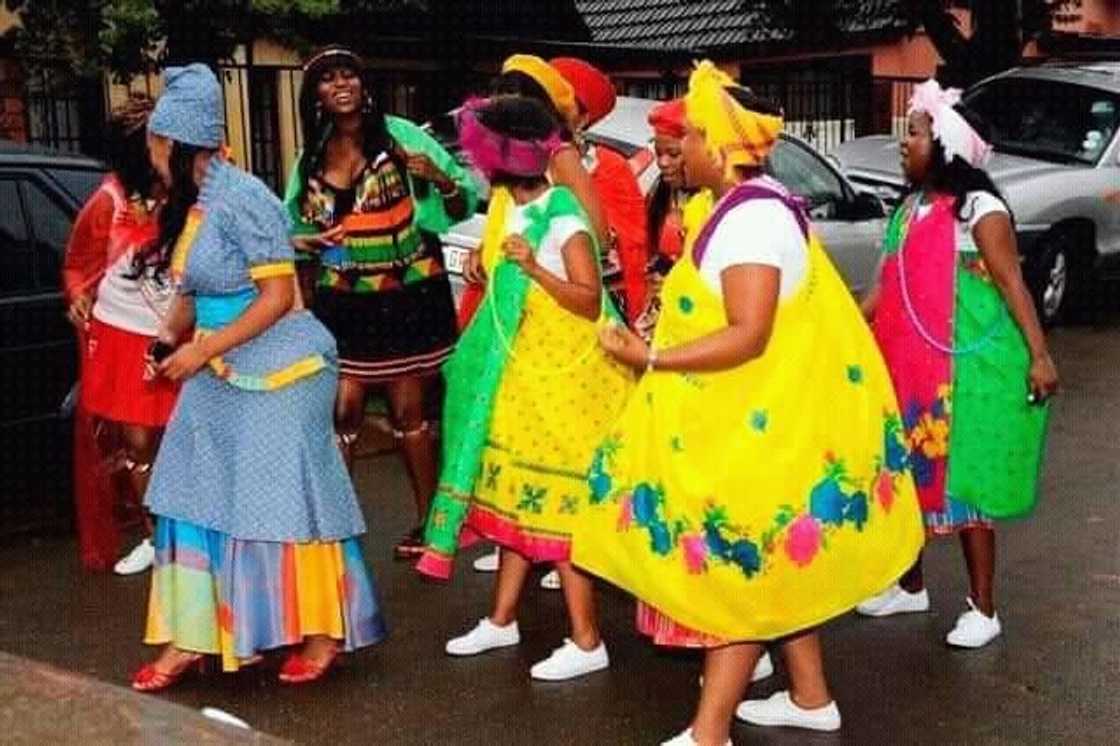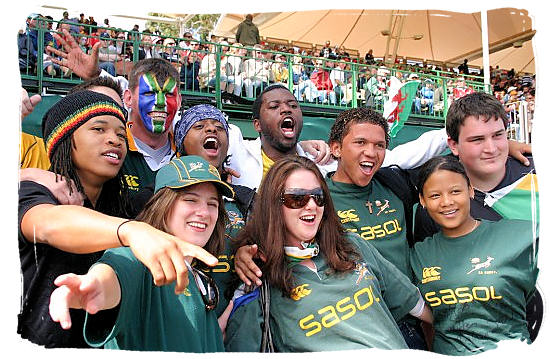What Does South African Culture Today Mean?
Table of ContentsThe 8-Minute Rule for South African Culture TodayUnknown Facts About South African Culture TodayHow South African Culture Today can Save You Time, Stress, and Money.South African Culture Today Can Be Fun For AnyoneThe 9-Minute Rule for South African Culture TodayThe Best Guide To South African Culture Today
An issue of relevance in Zambian villages is the passing away of liked ones. All members of the village put money, time and initiative together for the interment of the deceased.During the mourning period; men remain outside the residence and the females stay inside your house of the deceased. After speaking about the dead, the village strolls to the place of interment to state their last farewells. Songs and dance is a really vital element of the Zambian culture. The various tribal devices have their very own dance forms; nonetheless, makishi is usual amongst all people.
Some Ideas on South African Culture Today You Need To Know
When it involves music, drums are made use of one of the most, with a range of drumming ceremonies. In Zambia, bulk of individuals are Christian; Protestant and Roman Catholic. There are tiny groups of Muslims and Hindus, with the rest adhering to neighborhood native tribal beliefs.

South African heritage and culture is immensely diverse, and consists of various groups of people who each have their own customs and ideas. Having such a variety of individuals and societies is what makes South Africa so unique. In real sense of the phrase, we are a rainbow country.
Making it the 7th on the list of nations with the most Portuguese people in it outside of Portugal. Portuguese is not just a culture, yet it is likewise a language and a race. Portuguese people originate from the country of Portugal in Europe, nevertheless, due to Portugal (like numerous various other nations in Europe) discovering the world and overcoming other nations throughout the 15th 20th centuries, South Africa has what we call Portuguese South African's living in it.
The Definitive Guide for South African Culture Today
Among the popular features of the topography is a plateau that covers nearly two thirds of the center of the country. The plateau complex climbs toward the southeast, where it climaxes in the Drakensberg array, part of an escarpment that separates the plateau from the coastal locations. The Drakensburg consists of Champagne Castle, the greatest peak in the nation.
The area north of the Witwatersrand, called the bushveld, inclines downward from east to west toward the Limpopo River, which forms the international border. The western area of the plateau, the middleveld, also comes down in the direction of the west and varies in altitude in between the highveld and bushveld. In between the Drakensburg and the eastern and southern coastline, the land descends to the sea.
Nearer the shore there is a low-lying level called the eastern lowveld. Southwest of the plateau the nation comes to be gradually much more dry, paving the way to the hostile desert of the Great Karroo, verged on the east by the reduced, better sprinkled plateau of the Little Karroo. Dividing the completely dry southerly inside from the sandy littoral of the southern shore and West Cape is an additional array, the Langeberg.
South African Culture Today - An Overview
The country's racially, ethnically, and politically split background has actually created national and subnational signs that still operate as symbols of the country, and others signs that are approved only by particular groups. The monuments to white settler occupation and political supremacy, such as the Afrikaner Voortrekker ("leader") Monolith in Pretoria and the Rhodes Monument honoring the British colonial realm home builder and Cape prime minister Cecil Rhodes, continue to be sectarian symbols.
The very first contemporary inhabitants were the San ("bushman") hunter-gatherers and the Khoi ("Hottentot") individuals, who rounded up livestock (South African culture today). The San might have been existing for countless years and left proof of their presence in countless old cavern paintings ("rock art"). Bantu-speaking clans that were the forefathers of the Nguni (today's amaZulu, amaXhosa, amaSwazi, and vaTsonga peoples) and Tswana-Sotho language groups (today's Batswana and Southern and Northern Basotho) migrated below eastern Africa as early as the fifteenth century

Both former republics of the Orange Free State and Transvaal (South African Republic) were established by Afrikaner inhabitants who defeated and dispossessed the Basotho and Batswana. Lesotho would certainly have been by force incorporated into the Orange Free State without the extension of British defense in 1869. The best unification of the nation arised from the South African Battle (18991902) between the British and both Afrikaner republics, which lowered the country to spoil at the beginning of the twentieth century.
Afrikaners traditionally considered themselves the just true South Africans and, while granting full citizenship to all locals of European descent, refuted that status to individuals of shade until link the democratic transition of 1994. British South Africans maintain a feeling of cultural and social connection to Great Britain without deteriorating their identification as South Africans.
How South African Culture Today can Save You Time, Stress, and Money.
The diversity and fragmentation within ethnic collections and the balance of stress between those teams throughout the twentieth century stopped interethnic civil conflict. While intergroup tensions over resources, entitlements, and political supremacy remain, look at this web-site those disputes are as most likely to pit Zulu versus Zulu as Zulu against Xhosa or African versus Afrikaner.
From colonial India, British sellers and managers brought the bent metal decorative roofings and slender shoelace work columns that still typify the terraces of homes arounds and cities throughout the country. Holy places add a vital building aspect even in the smallest towns. Along with the skyrocketing steeples and traditional stonework of Afrikaans Dutch Reformed churches, Anglican churches, synagogues, mosques, and Hindu shrines offer range to the spiritual building scene.

Slaughtering and the brewing of standard cereal beer are vital in safeguarding the engagement and a good reputation of the ancestors who are considered the guardians of good fortune, success, and health. Indian areas keep their indigenous cooking practices and apply them on Islamic and Hindu routine and ritualistic events. Afrikaners and Coloured individuals gather at weekends and special events at multifamily bbqs called Learn More braais, where neighborhood bonds are enhanced.
Due to the fact that this was the key economic enterprise of both black Africans and white homesteaders, dispute in between those groups centered on the possession of grazing land and animals. In 1867, the largest ruby deposits on the planet were uncovered at Kimberley in the west central location. The wealth from those areas helped fund the exploitation of the biggest gold reef on the planet, which was found on the Witwatersrand in 1886.
7 Simple Techniques For South African Culture Today
This brought about misconceptions and purposeful misrepresentation in the ventures of white inhabitants and federal government authorities with African principals throughout the early american duration (South African culture today). In the establishment of African reserves, some elements of common and mainly "tribal count on" land period were protected, and also in white rural locations, forms of public tenure were still exercised in locations with African areas
After the democratic change of 1994, programs for land restitution, redistribution, and reform were instituted, but development has actually been sluggish. The white minority still manages eighty percent of the land. In the wake of farming land invasions in Zimbabwe, the Department of Land Affairs has actually vowed to speed land redistribution.